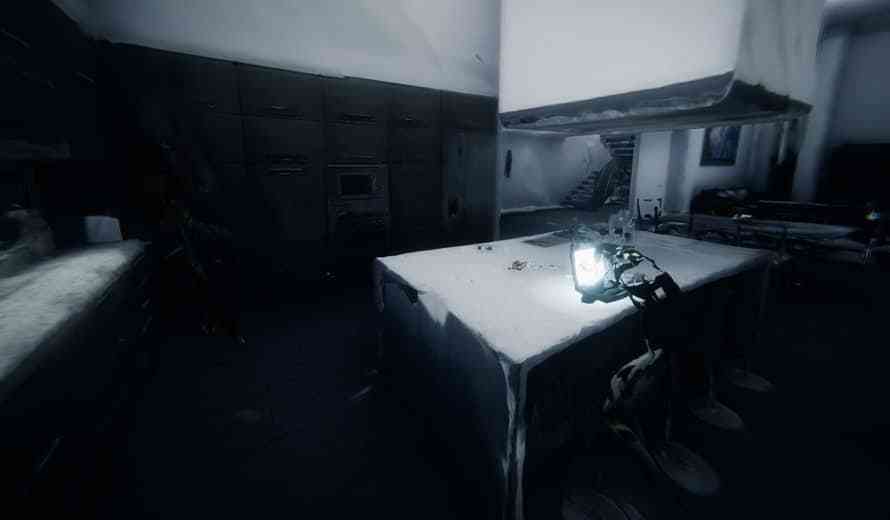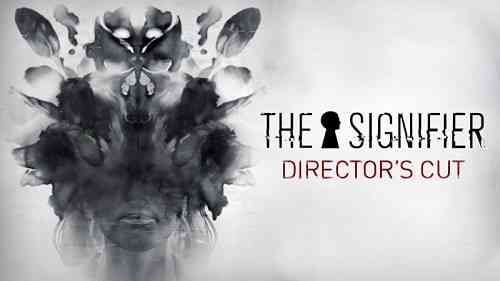The Signifier Director’s Cut Review
If someone took a random slice of your memory, what would they find? A profound meditation on life and death, or technicolor visions of pepperoni pizza and a frosty brew? An endless loop of some guilty-pleasure pop song, or a color-commentaried slo-mo reel of that clutch three-pointer you made senior year? For me, it would most likely be a low-rent motel neon sign intermittently flashing “Vacancy.”
The Signifier Director’s Cut — now on PC and then appearing later this year on every platform — is a souped-up version of 2020’s The Signifier, a first person point-and-click puzzle game with definite walking simulator overtones. Its story is based on the premise — cribbed from the psychoanalytic theory of Jacques Lacan — that there is a complex interchange between our objective experience of reality and the emotional states that sometimes inform it. Now, I suspect that both contemporary brain science and a whole bunch of mystics might quibble with some of Lacan’s ideas, but what the heck, we’ll engage our big ol’ suspend disbelief button and go with it for the five or so hours that The Signifier Director’s Cut takes to play through.
The game doesn’t always make sense, but at least it has a solid intellectual pedigree. It can’t be easy making digital entertainment out of arcane psychoanalytic theory and meditations on out-of-control technology.
Big Dreams, Modest Execution
Although the premise is a bit opaque, the story setup is straightforward and the cast of characters is manageably small. You play as Frederick Russell, a pioneering neuroscientist and inventor of the Dreamwalker, a machine that allows Frederick to examine and experience people’s memories and dreams…you know, definitely for the advancement of science and all that. Somewhat in defiance of a government watchdog agency that is policing inflammatory tech like the Dreamwalker, Frederick is asked to use his machine to fast track an investigation of the apparent suicide of Johanna Kast, a former exec at the powerful tech giant GO-AT. With the help of some human colleagues and EVEE — the AI voice of the Dreamwalker — Frederick uses physical clues and deep dives into Johanna’s memories, emotions and dreams to solve the mystery of her death.
As he conducts his investigation, Frederick moves between his everyday “real” world, and two versions of Johanna’s memories: the objective form, essentially her literal memories — albeit glitchy and full of holes and distortions — and the dream-like world of subjective impressions operating at the level of emotion. Each version of reality needs a distinctive visual analog and it’s here that The Signifier Director’s Cut’s indie art budget meets a bit of a challenge. Frederick’s waking world is old-tech bland, lacking in textural detail and character. In contrast, the sometimes trippy memory worlds are graphically more engaging but can also be visually fatiguing, filter-heavy, desaturated and occasionally hard to decipher. That said, there are some effective moments as Frederick explores Johanna’s jumble of emotions and memories.

Budgetary considerations pop up in other areas of the presentation as well. For a game so infused with solid and challenging subject matter, the writing is colorless and lacking in drama or lyricism, and it’s voiced by actors with competence but little sense of character. The game’s linear progression and pacing from start to finish are deliberate and while the story is layered and intriguing, the game never really builds or lets the player take control of the speed at which events unfold. As a result, playing The Signifier can feel more like an emotionally detached treatise than a murder mystery probably should. It doesn’t help that so much of the environmental storytelling — scientific articles, podcasts — is more concerned with the underlying mechanics and politics of the Dreamwalker, and less about the characters themselves.
Puzzles or Roadblocks?
One of the beefs I often have with puzzle games is the arbitrary, make-work nature of piecing together objects and clues for no other reason than to extend gameplay or create a “challenge.” Unfortunately, The Signifier falls into this trap a few too many times, and I think it’s telling that one of the features of the Director’s Cut is a cinematic mode that essentially eliminates the puzzles altogether and focuses on the story. This begs several questions, including the need to make The Signifier a puzzle game to start with. Why not lean into the walking simulator genre and just tell the tale?

I did not play the original release, so I can’t compare this new version to the old or verify its improvements or the effectiveness of its multiple ending variants, but if the game’s frequent load times have been improved, they must have been really egregious before. In the end, although The Signifier Director’s Cut has a solid intellectual conceit and an interesting story to tell, I’m just not convinced that a point-and-click puzzle game is the ideal medium for telling it. Despite its improvements, it’s still rough around the edges in lots of little ways. Still, the new release of the game manages to drop more than a few thought bombs for later contemplation, so while The Signifier Director’s Cut lacks in polish and execution, it is worth checking out for fans of the point-and-click genre and brainy games in general.
***PC Code provided by the Publisher***
The Good
- Interesting premise and story
- Distinctive visuals and art direction
- Innovative mechanics
The Bad
- Colorless writing and voice acting
- Wooden pacing
- Some arbitrary or frustrating puzzles
- Slow and frequent loading times kill momentum

